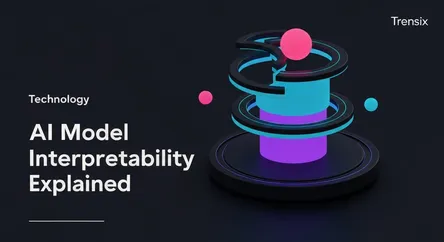Technology
AI Model Interpretability Explained

Ever wonder how AI makes decisions? Model interpretability, or Explainable AI (XAI), reveals the 'why' behind AI outputs, crucial for trust and fairness.
What is it?
Model Interpretability, often part of the broader field of Explainable AI (XAI), is the degree to which a human can understand the reasoning behind a decision made by an AI model. Many advanced AI systems, particularly deep learning networks, operate as 'black boxes'—they provide highly accurate outputs, but their internal decision-making process is opaque. Interpretability techniques aim to open this black box, showing which data features were most influential in reaching a specific conclusion and making the model's logic transparent.
Why is it trending?
As AI is deployed in critical sectors like finance, healthcare, and criminal justice, the demand for transparency has surged. Regulators and policymakers are introducing rules that require justification for automated decisions to prevent bias and ensure fairness. Furthermore, businesses need to trust, debug, and improve their models. Understanding why an AI system fails or succeeds is essential for refining its performance, managing risk, and building crucial trust with users who are impacted by its decisions.
How does it affect people?
Interpretability directly impacts fairness and accountability. For an individual, it could mean understanding exactly why a loan application was rejected or why a certain product was recommended. This transparency allows people to challenge unfair or biased outcomes. For society, it helps developers identify and correct biases within AI systems, leading to more equitable technology. Ultimately, building interpretable models fosters greater confidence in AI, ensuring that these powerful tools are used responsibly and ethically.